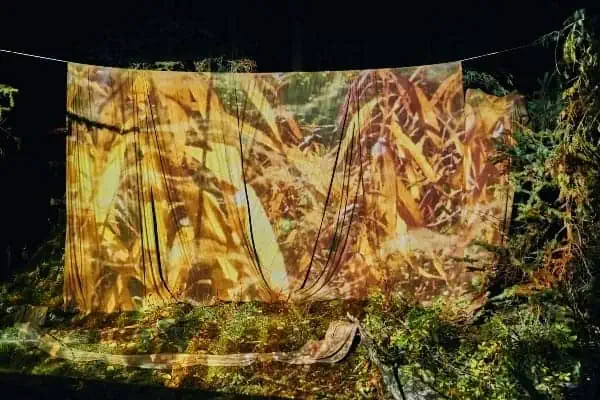The snow is flying, the sky is full of clouds and apparently this is the way it is to be for a while. What is a budding young Yukon amateur astronomer to do?
This is a time to re-grease your telescope with winter grease and double check all your gear and make sure that everything is ready for viewing in the Great Northern Freezer.
After winter maintenance is done, it is time to venture forth and see what is new out there in the way of gadgets and gizmos that will make your night-time observing session a more enjoyable experience.
Maybe you have an amateur astronomer in your family and with Christmas coming, what do you get them?
An excellent place to start is The Backyard Astronomer’s Guide. Written by Terence Dickinson (a Canadian no less) and Alan Dyer, this book is the ultimate guide to everything in the hobby.
It covers basically everything an amateur astronomer will need to know from how to get started to long-exposure, deep-sky astrophotography.
What is really impressive is how clear and easy it is to understand. In my travels I have owned several, it is simply the best book to buy. If you have any interest in the night sky and wondered what is involved in getting started, and what you can expect to see, then this book is the one own. This book sells for about $50.
Something that caught my eye that represents excellent value is the Sky-Watcher Backpacker. Included in this bundle of goodies is a 90-mm telescope, table mount and a motor drive that all fits into a cool backpack.
This little telescope will show you the rings of Saturn and a wealth of deep-sky treasures.
Good for nighttime or daytime viewing, this is a lightweight and easy-to-use multi-purpose telescope that is priced around $500. Lots of fun and goes anywhere.
OK, so what if the person you have to buy for already has a telescope? My next choice would be the iOptron Mini Tower. This amazing little toy is a telescope mount that comes computerized and includes a hand controller, tripod, an aluminium case and lots of AC and DC adaptors.
You can even mount two telescopes on this mount as long as the combined weight is around 20 pounds or so.
The Mini Tower comes complete with all the basic accessories and more. Probably the coolest toy out there that is just under the $1,000 mark.
Giant binoculars are also a great gift idea for any amateur astronomer. In this department I would definitely pursue the 28×110 mm made by Garrett Optical. These binoculars will have to be tripod mounted (they weigh around 16 pounds) so keep this in mind. With 4.3-inch objective lenses to let lots of light in, and 28 power, this is definitely a powerful observing tool.
Good for daytime or nighttime, these giant binoculars come with a hard-sided case, lens pen and the eyepieces can take filters to offer an even better view.
Giant binoculars are a perfect way to enjoy the night sky, offering simple two-second setup and amazing views. At $850, another awesome buy.
Finder scopes are always an excellent idea. The easier it is to find a deep sky object, the more enjoyable your observing session.
My favourite finder has always been the Telrad. This little lightweight box mounts on just about any telescope and presents your eye with a three-circle target sight in red.
The Telrad runs on a couple of double-A batteries that need to be changed about once a year. This device makes deep-sky observing fun and easy.
You can take the Telrad off the base for storage and, when you place it back on the base, it is still in alignment, saving you time. The Telrad sells for a mere $50 or so.
Also available for the Telrad are star charts, with the Telrad three-circle target sight laid out right on the star chart.
The charts come complete with a brief description and basic information as to what you are looking at. Astronomy made simple, that is what it is all about and this is as simple as it gets.
Just locate the constellation, point your Telrad to match the star chart in the book and presto, there it is.
These books are laminated and very durable. With a price tag of about $30 each, they are a great buy.
With the hobby of astronomy getting more and more computerized, a power tank is becoming a necessary item to have on an observing session.
A power tank is a portable power supply that allows you to power up AC and DC items. For about $150 to $200, you can power your telescope, computer, digital camera and your music all at the same time. This is much easier than playing games with batteries in the cold winter nights when you are wearing mitts or gloves.
Another great gift idea is an LED light on a bendable gooseneck with a clamp on the other end to fasten to a table. Just paint the LED lens cover red (so it doesn’t mess up your night-adapted vision) and you can now put light where you need it most … and then it easily and neatly folds out of the way.
I use about four of these little gems and have found them invaluable, especially when doing nighttime photography.
A dew shield is a valuable tool that helps prevent dew and ice from forming on your front objective lens. This is very important if you happen to own a Schmidt Cassegrain telescope as the front element (called the crown lens) is directly exposed to the elements and will soon ice or dew up, bringing an otherwise great observing session to an unfortunate end.
As an added bonus, the dew shield also helps to keep out stray light. For the price of $40, this is money well spent.
Insulated coveralls are vital to any amateur astronomer as there is nothing worse than trying to enjoy a great view and you are shaking and shivering so bad you can’t even see in the eyepiece properly.
Being all nice and toasty warm while enjoying an impressive view at the same time is the only way to surf the great cosmos. For a mere $150 or so, you can enjoy the night sky in comfort and warmth. A definite must for those chilly Yukon winter nights.
These are some of the best value-for-the-money astro accessories on the market today.
There are so many amazing gadgets and gizmos to choose from that it can be a little bit confusing. This is truly an amazing time to be involved in the hobby of astronomy, with so much available to even the most humble observer on a tight budget.
So take some time and head outside and enjoy the greatest light show on earth this Christmas.
Clear Skies, from James “Deep Sky” Cackette.
High Lights
Dec. 19 Last quarter Moon.
Dec. 26 Venus and Neptune close together in the evening sky.
Dec. 27 New Moon.
Dec. 28 Mercury, Jupiter and a thin crescent Moon make an excellent grouping in the evening sky.
Above Whitehorse Dec. 20 at midnight. Sky chart courtesy of www.heavens-above.com.




